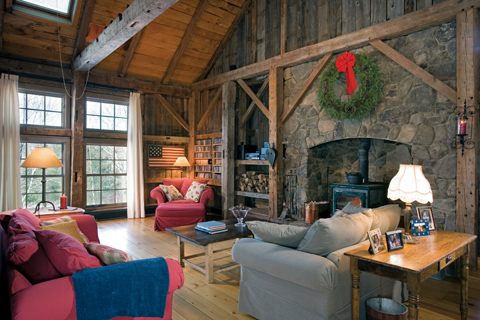“Green” is everywhere these days—we recycle, we reuse, we try to be mindful of our energy consumption. And as people throughout the country become increasingly aware of their own environmental footprint, the green movement has come to homebuilding as well. Build green and you’ll end up with an efficient home, lower energy bills, a healthier environment, and you may qualify for tax rebates and zoning allowances, depending on where you live.
Why Certify?
“There are a multitude of reasons why people are building green homes,” says Chad Riedy, program manager for Green Building Education at the National Association of Home Builders. “A study was just released from California that showed that green certified homes are valued at about 9 percent more than other homes. Some consumers do it because it’s the right thing to do for the environment; they want to conserve energy and have lower energy bills,” he says. “There are also consumers who are doing it to have a healthier, cleaner home.”
What do the different certifications and standards mean in practical terms? Each standard outlines specific requirements for homes to be certified at different levels, but they differ somewhat in the types of construction they cover and in the cost of certification. Here is an overview of some of the main green building standards.
National Green Building Standard
The ICC 700 National Green Building Standard™ (NGBS) was created in 2007 by the National Association of Home Builders (NAHB) and the International Code Council (ICC). The standard provides for four threshold levels—Bronze, Silver, Gold, and Emerald. Builders or remodelers score points on site development; energy, resource, and water efficiency; indoor environmental quality; and homeowner education. One of the things that makes the NGBS unique is that it is the only ANSI-approved standard for residential construction, which means that it went through multiple public comment periods and represents a true consensus. Builders can use a free online scoring system to track their points, but you’ll need to hire a verifier to obtain final certification. To attain an Emerald rating (their highest), the home must have energy savings of 60 percent or more. The NAHB has certified thousands of builders around the country as Certified Green Professionals.
LEED for Homes
LEED (Leadership in Energy and Environmental Design) was developed by the U.S. Green Building Council in 2000 and has been continually updated to reflect evolving standards in green building. LEED measures sustainable sites; water efficiency; energy and atmosphere; materials and resources; indoor environmental quality; locations and linkages; awareness and education; innovation in design; and regional priority. LEED points are awarded on a 100-point scale; you must score a minimum amount of points to be certified. Certification is done by the Green Building Certification Institute, an independent nonprofit network of certifiers. The U.S. Green Building Council also provides an online Green Home Guide that is a great resource for ideas and advice on everything from selecting flooring and furniture to tips on water conservation.
Energy Star®
ENERGY STAR doesn’t just certify appliances; it certifies homes that meet energy efficiency guidelines set by the U.S. Environmental Protection Agency as well. To qualify, a new home must be at least 15 percent more energy efficient than homes that meet the 2009 International Energy Conservation Code (IECC) and must have additional features that deliver a total energy efficiency improvement of up to 30 percent compared to typical new homes. ENERGY STAR looks at insulation efficiency; window performance; tightness of construction and ducts; heating and cooling efficiency; and lighting and appliances. A third-party rater verifies adherence to the guidelines.
Get Help
No matter which rating system you choose, it’s important for your producer and builder to be aware of the requirements and guidelines from the very beginning of the home design process. “If you’re going for a certification it’s much easier to get the process started from the very beginning by sitting down with your producer and builder to discuss what level of certification you want to go for,” says Riedy. “Then they can help figure out the costs and what needs to go into the home.” All three rating systems have locators online to help you find an experienced, certified green builder in your area, but you can also ask your builder to work within a green framework even if they are not certified.
Log home companies are generally conscientious of green building principles. “We always say in this industry we were green before green was cool, just because of the nature of log homes,” says Jeremy Bertrand of Log Homes of America, Inc. “I think the eventual focus will be on carbon footprint and that’s where wood will have a significant advantage,” he says, noting that the process involved in creating a log wall requires much less manufacturing than a conventional wall. Log homes also tend to incorporate passive solar design principles and more natural materials. “Green building methods can be incorporated in our homes just as they are in conventionally built homes,” says Bertrand, adding that many green features are very affordable. “There are things like on-demand water heaters and low-flow toilets, where the price point is really no different than the alternative option … the payback is nearly immediate.”
Photography by Roger Wade Studio

